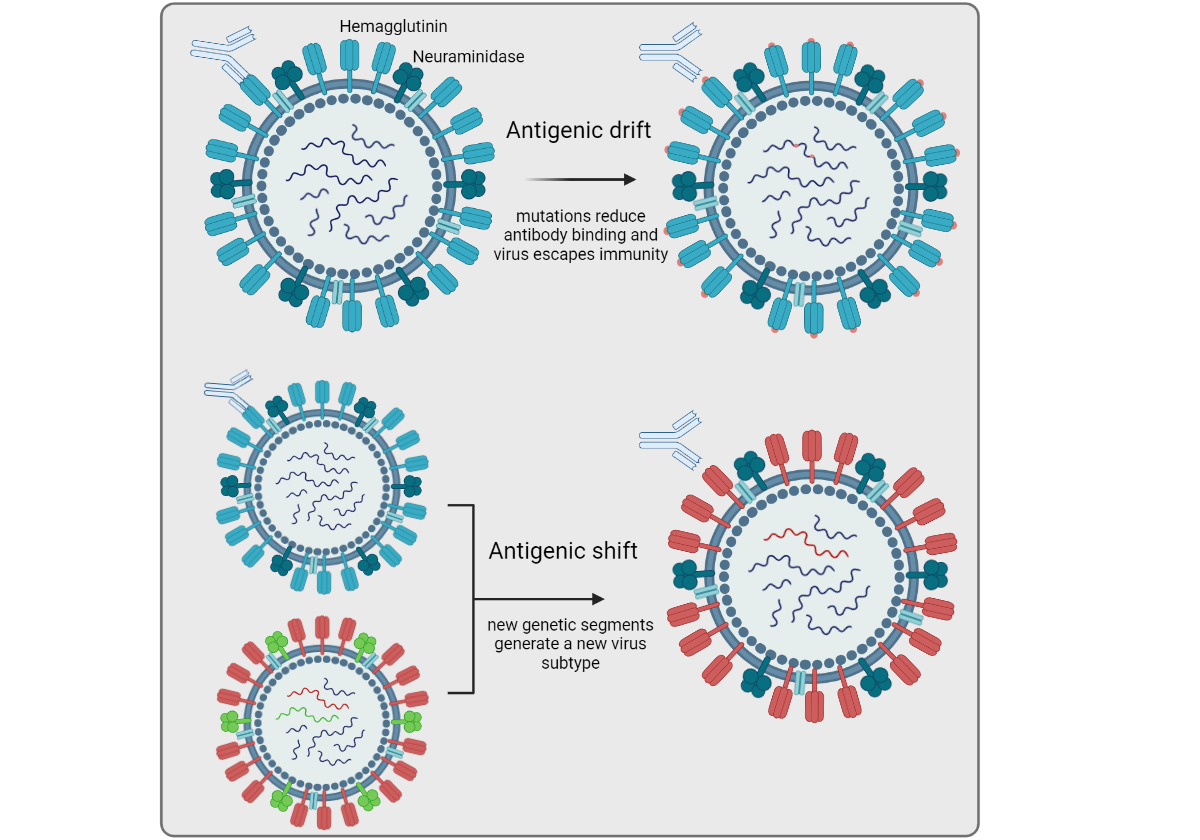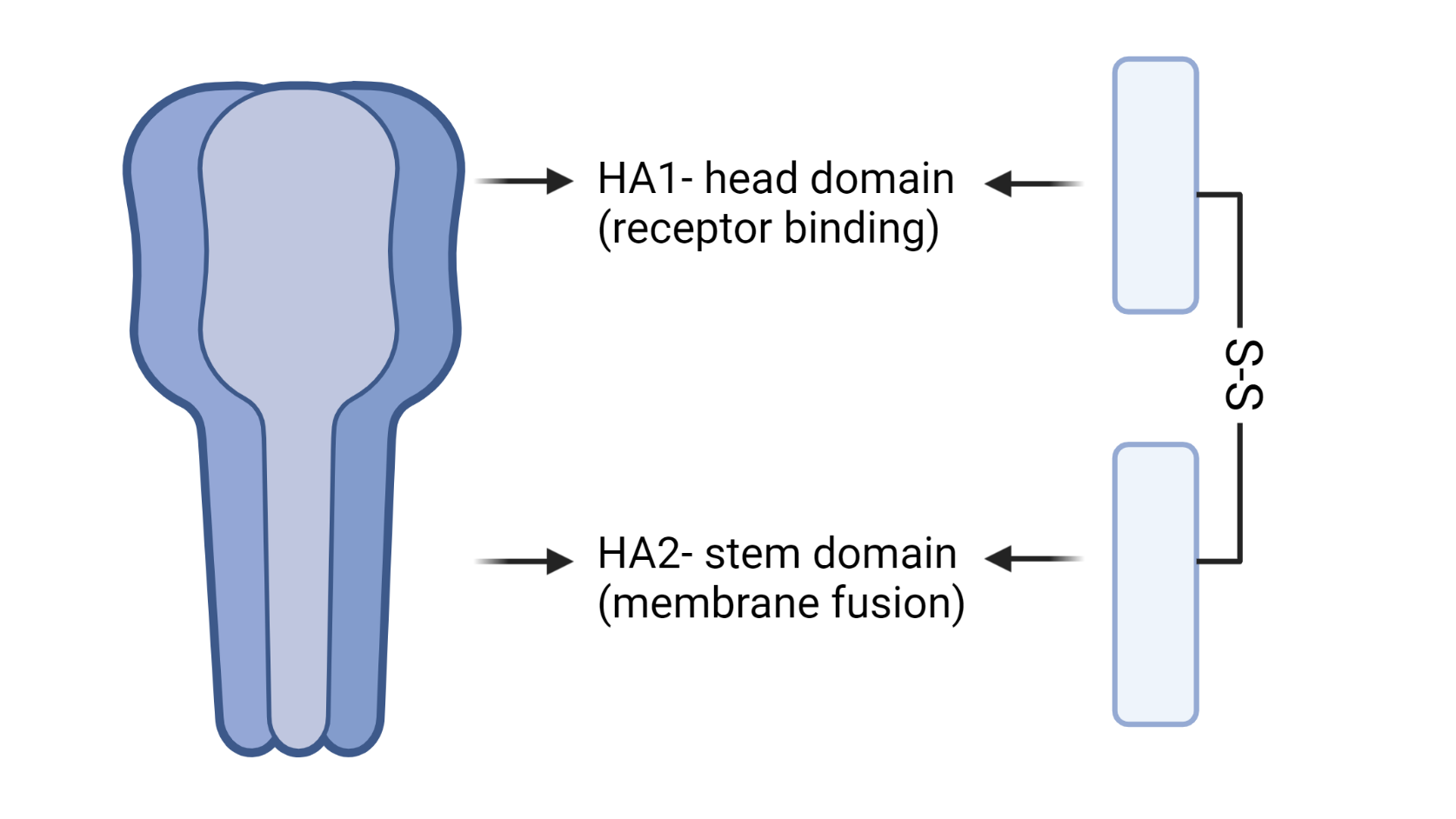Quadrivalent Hemagglutinin Nanoparticles: Closer to a Universal Influenza Vaccine
The Centers for Disease Control and Prevention (CDC) estimates that flu viruses caused ~400,000 hospitalizations and 22,000 deaths in the U.S. during the 2019-2020 season. Flu immunization has relied on annual administration of trivalent or quadrivalent vaccines, which protect against three or four viral strains, respectively. The 2020-2021 U.S. quadrivalent influenza vaccine targeted influenza A(H1N1)pdm09, influenza A(H3N2), and influenza B/Victoria and B/Yamagata lineages.
Unfortunately, various factors limit the efficacy and protection conferred by flu vaccines. For instance, the protection conferred by current flu vaccines is not long-lived; therefore, immunity needs to be stimulated yearly to match the circulating strains. The selection of strains for developing annual vaccines relies on predictions based on year-round flu surveillance by different organizations worldwide. While this process is based on massive amounts of data, it's not fail-safe and has been known to miss circulating strains. This is especially true when new strains emerge due to antigenic shift, as occurred during the 2009 flu pandemic (i.e., H1N1 in 2009) or when the virus mutates, allowing antigenic drift (Cho and Wrammert, 2016).
Antigenic shift vs. drift
In antigenic shift, a sudden change in a viral protein relevant to immunity occurs through swapping of genomic material between viral strains, resulting in a new subtype for which immunity has not been established. In antigenic drift, mutations accumulate over time, allowing viral escape from vaccine-induced antibodies. Antigenic drift occurs in both viruses predominantly associated with flu infections (i.e., Influenza A and B). However, flu pandemics are brought about by antigenic shifts in Influenza A viruses (Treanor, 2004).
Antigenic drift and antigenic shift

Antigenic drift and antigenic shift- Two mechanisms leading to viral immune escape. In antigenic drift, small changes (e.g., point mutations) accumulate over time, leading to amino acid substitutions in key surface proteins such as hemagglutinin (HA) and neuraminidase (NA), which result in new viral strains and can lead to reduced neutralizing antibody binding. In contrast, antigenic shift occurs through genome segment reassortment between viral strains resulting in the introduction of novel HA and/or NA sequences and new viral subtypes (Webster and Govorkova, 2014). Created with BioRender.com
How does the flu vaccine work?
Several influenza vaccines are currently approved for use in the U.S., including inactivated, live-attenuated, and recombinant HA vaccines. As mentioned previously, their efficacy is highly dependent on how well the immunogens included in the trivalent or quadrivalent formulations match the circulating flu strains. While flu vaccines are known to elicit both humoral and cellular immunity, antibodies to the hemagglutinin protein are considered the best correlate of protection (Kim et al. 2018).
Hemagglutinin is a trimeric viral envelope glycoprotein consisting of two main domains, a globular head (HA1) and a stem (HA2). The head domain is an immunodominant epitope and the predominant target of vaccine-induced antibodies, which neutralize viral host cell entry.
Influenza Hemagglutinin

Influenza Hemagglutinin- Hemagglutinin is one of three glycoproteins present on the influenza virus envelope. Two main domains in hemagglutinin play a critical role in viral cell entry: the HA1 domain interacts with the host cell surface receptor, sialylated glycan receptor, and the HA2 domain mediates membrane fusion. The HA1 and HA2 domains are attached by a disulfide bond (Cho and Wrammert, 2016). Created with BioRender.com
Nevertheless, hemagglutinin's globular head domain is also highly variable, being the site for cumulative mutations resulting in antigenic drift. Recent findings support that vaccines promoting antibody responses directed against more conserved stem domain epitopes may provide broader protection (Vemula et al. 2017).
New quadrivalent vaccine for broader influenza protection
With the goal of inducing long-lived and broadly protective influenza immunity, a team led by Dr. Masaru Kanekiyo at the Vaccine Research Center (VRC), National Institute of Allergy and Infectious Diseases (NIAID), NIH, U.S., recently developed a quadrivalent nanoparticle vaccine (Boyoglu-Barnum et al. 2021). This new vaccine candidate consists of an array of twenty hemagglutinin trimers, corresponding to the influenza A and B strains covered by the licensed flu vaccine (H1, H3, B/Victoria, and B/Yamagata).
"Genes for expression of HA fusions to nanoparticle trimeric components were codon optimized for expression in human cells and cloned into the CMV/R (VRC 8400) mammalian expression vector by GenScript." (Boyoglu-Barnum et al. 2021)
Preclinical findings in several animal models, including mice, ferrets, and rhesus macaques, support that hemagglutinin mosaic nanoparticle assembly induces antibody responses similar or superior to those elicited by the current quadrivalent vaccine. Additionally, the mosaic nanoparticle vaccine improves antibody responses against hemagglutinin's stem domain.
Anti-stem antibody titers elicited by the mosaic nanoparticle vaccine in macaques persisted for 99 weeks and surpassed those induced by the current quadrivalent vaccine. Lastly, while the predominant antibody response still targeted hemagglutinin head epitopes, the mosaic nanoparticle vaccine increased anti-stem antibody responses following a booster dose.
Therefore, the Kanekiyo group at NIAID is encouraged by these findings to move their studies towards a Phase 1 clinical trial to evaluate the safety and reactions elicited by a variant of this new mosaic nanoparticle vaccine candidate.
- Like (2)
- Reply
-
Share
About Us · User Accounts and Benefits · Privacy Policy · Management Center · FAQs
© 2025 MolecularCloud



